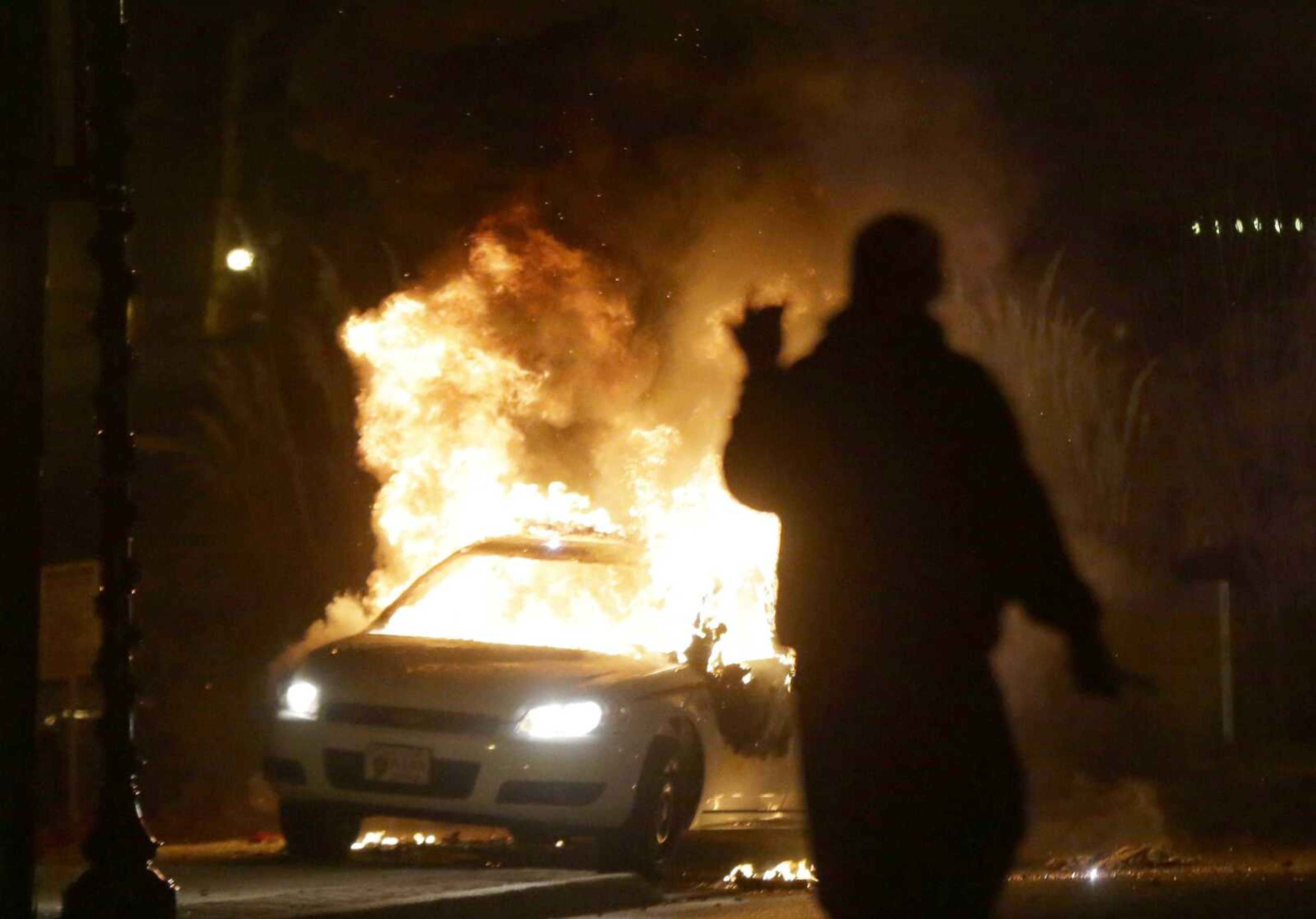Ferguson sees progress a year after grand jury announcement
FERGUSON, Mo. -- A year has passed since parts of Ferguson burned in the rage that followed a grand jury's decision not to prosecute the police officer who fatally shot Michael Brown. In that time, signs of hope have emerged. Some of the nearly two dozen businesses destroyed in the Nov. ...
FERGUSON, Mo. -- A year has passed since parts of Ferguson burned in the rage that followed a grand jury's decision not to prosecute the police officer who fatally shot Michael Brown. In that time, signs of hope have emerged.
Some of the nearly two dozen businesses destroyed in the Nov. 24, 2014, riots have reopened. Concrete barricades that protected the police station are gone. The majority-black St. Louis suburb once led almost exclusively by whites has a black city manager, municipal judge and two new African-American council members.
It's not exactly a return to normal, but for many of those who endured last year's unrest, it's an improvement.
"We've got a ways to go," said Ron Johnson, the black Missouri State Highway Patrol captain who led the law-enforcement effort in Ferguson. "We didn't get in this place in America overnight, so it's going to take time. So we have to keep trying."
Brown, who was black, was 18 and unarmed when he was shot to death in August 2014 by white Ferguson police officer Darren Wilson during a confrontation in a street.
Brown's death helped spawn the national "Black Lives Matter" movement rebuking police treatment of minorities.
The Justice Department later cleared Wilson, concluding evidence backed his claim he shot Brown in self-defense after Brown first tried to grab the officer's gun during a struggle through the window of Wilson's police vehicle, then came toward him threateningly after briefly running away.
On that cold November night, after months of sporadic unrest, St. Louis County prosecutor Bob McCulloch called an evening news conference to announce the grand jury's ruling: no indictment.
At that moment, Michael Brown's mother, Lesley McSpadden, and his stepfather, Louis Head, were sitting atop a car in a sea of people in the middle of the street outside Ferguson police headquarters. As the car speakers blared the announcement, McSpadden began to wail and sob.
Head consoled her, then yelled, "Burn this bitch down!" to angry protesters gathered around them.
Chaos followed. Windows were smashed at City Hall. A police car was set on fire.
Police responded in armored vehicles, shooting tear gas.
Denise Lieberman, an attorney who is co-chairwoman of a protest group called the Don't Shoot Coalition, said lost amid the fires and looting was the fact police were "hyper-militarized" and aggressive against protesters, the majority of whom were behaving themselves.
"People out there trying to peaceably express themselves shouldn't have to live in fear of getting beaten up, assaulted with tanks and tear gas and chemical agents by the very actors who were supposed to be protecting them," she said.
If protesters saw the security presence as over the top, many in Ferguson felt it wasn't enough, citing the lack of Missouri National Guard presence until after the rioting began.
"I was just so frustrated that the city was left unprotected, that we had been promised National Guard protection," Ferguson City Council member Brian Fletcher said. "I felt the governor had failed the city of Ferguson. To this day, I'm very bitter about that."
Over several hours, 80 businesses in and around Ferguson were damaged, and at least 20 were destroyed, many burned to the ground.
Slowly, they're coming back -- a Little Caesars pizza restaurant, the Hidden Treasures antique shop and a bakery that is partnering with Starbucks.
City leaders take pride in the fact Ferguson has had a slight net increase in businesses over the past year.
"That's a testament to the small business owners committed to this community," Mayor James Knowles III said. "They've received a tremendous amount of support from the residents, and they've made that commitment to be here."
The rebuilding began literally before the smoke cleared. Fletcher recalled people coming from throughout the region to help clean up a day after the riots.
At Cathy's Kitchen, a diner near the police station, a patio table was thrown through a front window that night. What followed still has owner Cathy Jenkins in awe: Protesters locked arms in front of the eatery, protecting it from further damage.
"I thought that was great," she said.
Today, a new $5.5 million, 23-unit loft complex is under construction near the police station.
Cerner Corp, a medical billing company, is adding 200 jobs in Ferguson.
The Urban League is building an employment training center at the site of the QuikTrip that was burned a day after Brown's death.
Meanwhile, the city government has undertaken several changes, including placing caps on revenue from municipal court fines and costs.
The police department has embraced a model of community policing that involves getting to know residents and hosting meetings to address problems, rather than simply responding to crimes.
Even Lieberman, a protest leader, said change has been evident. She cautioned more is needed.
"One thing that's come out of this is that people are talking about race more," Lieberman said. "It was an intense, intense time, but it still is. We're still fighting for the very same kinds of reforms."
Johnson agreed more progress is needed.
"I think we'll know you're in a better place when the words 'both sides' are taken away and we think of ourselves as one," he said.
Connect with the Southeast Missourian Newsroom:
For corrections to this story or other insights for the editor, click here. To submit a letter to the editor, click here. To learn about the Southeast Missourian’s AI Policy, click here.










